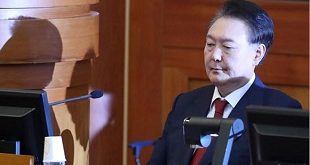
New York, United States | AFP | Faced with the calamitous fallout from the coronavirus on airline customers and the broader economy, Boeing found itself in an unfamiliar and uncomfortable position in March.
The company, a longtime symbol of American industrial power, was unable to raise the funds to finance its business.
Since that low point as the coronavirus health crisis was mushrooming into an economic crisis, private bond markets have improved considerably, enabling Boeing to fill its liquidity gap with $25 billion in bonds issued last month.
But that bitter reality at the outset of the COVID-19 pandemic underscores how deeply the 103-year-old company has fallen, in no small part due to its own missteps.
Boeing, which alone accounts for about one percent of US gross domestic product, has suffered numerous canceled orders for the 737 MAX, the jet that has been grounded for more than a year following two crashes that killed 346 people.
Demand has also diminished the 787 “Dreamliner” amid the downturn in commercial air travel, adding to its woes.
“Boeing has serious financial challenges,” said Stan Sorscher, a former Boeing engineer. “Air travel is down, aircraft are grounded, airline customers don’t need new airplanes, and capacity in the supplier network is questionable.”
Boeing chief executive David Calhoun has insisted Boeing will weather the crisis though he acknowledged the company lost ground through its own actions.
“There is no question that the MAX problems, the accidents, set us back and set us back for roughly two years,” Calhoun said earlier this month on Fox Business Network.
– Avoiding a bailout –
Even throughout this rocky period, Boeing has continued to enjoy success in its defense business.
But the company will need to show evidence of a genuine turnaround in its civil aviation division following the MAX crisis, which revealed problems with corporate culture that critics say showed the Boeing cut corners on safety to meet profit goals.
Credit ratings agencies have punished the company, downgrading its debt to just above junk status.
But Boeing’s clout in Washington has cushioned it from being seen as a likely candidate for bankruptcy, even during the current slump.
The company’s supply chain consists of some 17,000 companies in the United States employing 2.5 million workers.
Early in the crisis, Boeing had sought $60 billion in federal support and won strong backing from key players in Washington, including US President Donald Trump, who said in April, “We can’t let anything happen to Boeing.”
But Calhoun expressed misgivings about how support from the US Treasury would be structured and the conditions imposed. In addition to barring the company from paying dividends, the government could have demanded a stake in the company.
Instead, Boeing benefited from a series of emergency steps by the Federal Reserve that boosted liquidity in the corporate debt market and opened the door to its $25 billion bond offering, the sixth largest in history.
But issuing debt means Boeing will have to pay higher interest if its credit rating is downgraded further.
– MAX outlook hazy –
With the latest infusion of funds, Boeing is “pretty sound financially,” according to a banking source who has advised Boeing.
“Investors believe in this story longer term and are willing to lend to this company in the short term,” the source said. “There is some expectation that it might take time.”
But Calhoun has cautioned it could take up to five years for the aviation industry to recover to its pre-coronavirus growth levels.
Boeing plans to trim its production of the widebody 787 to 10 per month this year from 14 at the start of 2020, and cut down to seven a month in 2022.
Meanwhile, archrival Airbus stands as well positioned for the post-pandemic period because of its advantage in the narrow-body planes.
As the airline market recovers, there likely will be stronger demand for smaller jets like the Airbus A320neo, which require less fuel and have fewer seats to fill.
“Long-term, Boeing’s product line, in total, is inferior to Airbus. The 787 is strong, but demand is weak,” said Scott Hamilton, managing editor of Leeham News, which covers aviation.
“The Boeing 777X is a good airplane but the market has passed it by,” he said adding that “The MAX family line is inferior to the A320neo family. Boeing doesn’t have a viable competitor to the A220.”
The timeframe for the MAX’ return to service remains hazy. Airlines canceled 258 orders for the plane in March and April.
Boeing has said it aims to win government approval for the MAX to return in mid-2020, but regulatory sources told AFP that there will be no test flight before June.
Boeing plans to cut 10 percent of its staff, or about 16,000 jobs, to save money. It also could cut one of the 787 assembly plants, or move other engineering staff to cut costs, aviation sources said.
Boeing is “cutting new program development spending and retreating from any signs of a new product launch,” said Richard Aboulafia, aviation expert at Teal Group, a research firm specializing in aviation and defense.
“They just went an entire decade without launching a single all-new product, only the second decade that’s happened in company history. And there are no signs of anything happening in the decade ahead.”
 The Independent Uganda: You get the Truth we Pay the Price
The Independent Uganda: You get the Truth we Pay the Price



